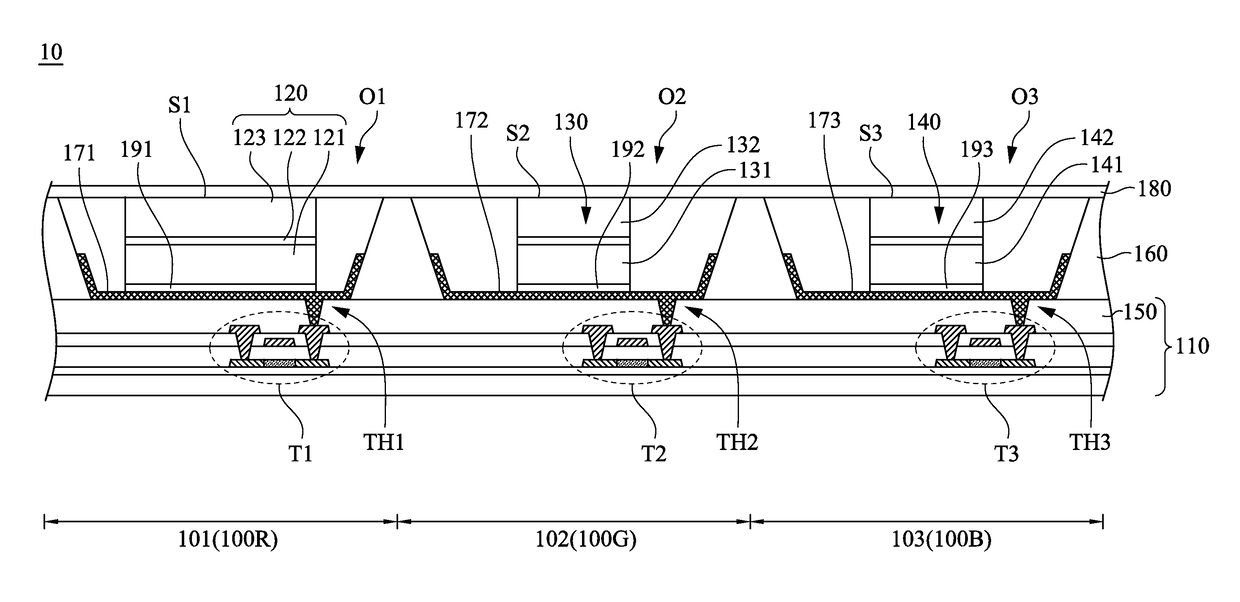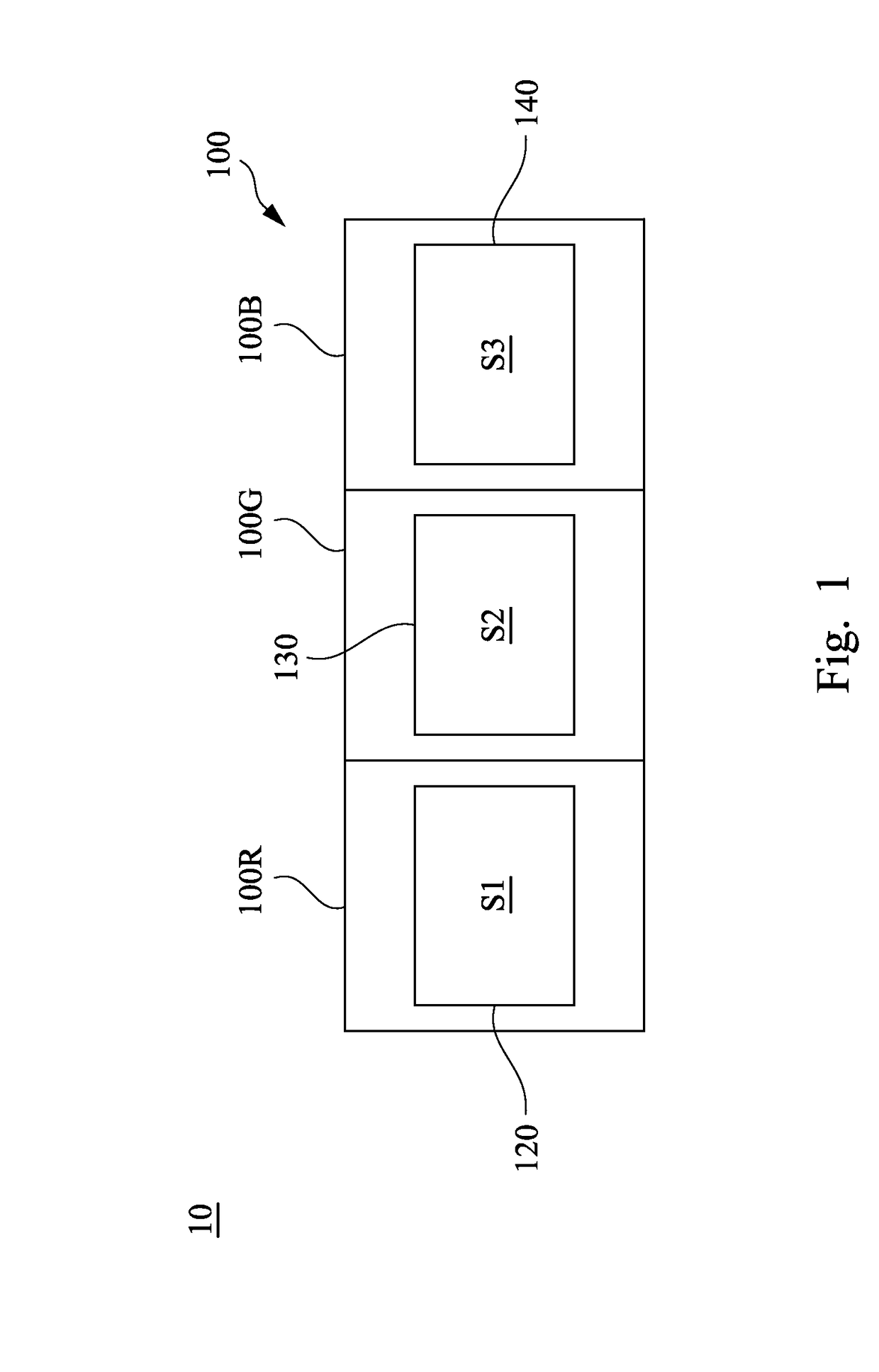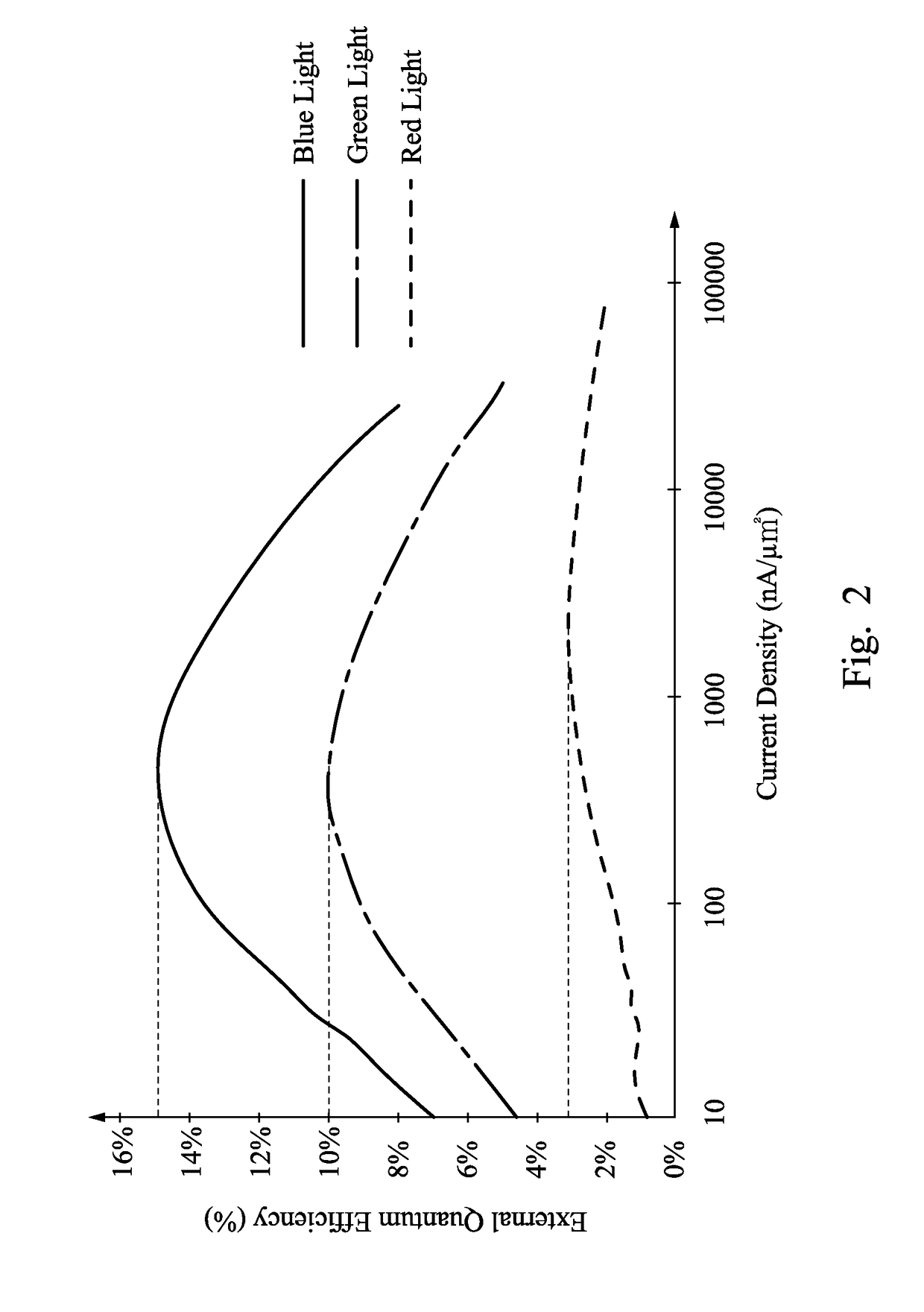Light emitting diode display
a technology of light-emitting diodes and leds, applied in the field of display, can solve the problems of inconsistent luminous efficiency of leds of different colors, low blue luminous efficiency of leds, and instability of organic light-emitting materials, so as to improve improve the inconsistent luminous efficiency of sub-pixels. , the effect of improving the inferior luminous efficiency of micro leds
- Summary
- Abstract
- Description
- Claims
- Application Information
AI Technical Summary
Benefits of technology
Problems solved by technology
Method used
Image
Examples
Embodiment Construction
[0024]In the following detailed description, for purposes of explanation, numerous specific details are set forth in order to provide a thorough understanding of the disclosed embodiments. It will be apparent, however, that one or more embodiments may be practiced without these specific details. In addition, drawings are only for the purpose of illustration and not plotted according to the original size. Wherever possible, the same reference numbers are used in the drawings and the description to refer to the same or like parts.
[0025]As used herein, “substantially”, “around,”“about” or “approximately” shall generally mean within 20 percent, preferably within 10 percent, and more preferably within 5 percent of a given value or range. Numerical quantities given herein are approximate, meaning that the term “substantially”, “around,”“about” or “approximately” can be inferred if not expressly stated.
[0026]In the following embodiments, a light emitting diode (LED) display comprises a plu...
PUM
 Login to View More
Login to View More Abstract
Description
Claims
Application Information
 Login to View More
Login to View More - R&D
- Intellectual Property
- Life Sciences
- Materials
- Tech Scout
- Unparalleled Data Quality
- Higher Quality Content
- 60% Fewer Hallucinations
Browse by: Latest US Patents, China's latest patents, Technical Efficacy Thesaurus, Application Domain, Technology Topic, Popular Technical Reports.
© 2025 PatSnap. All rights reserved.Legal|Privacy policy|Modern Slavery Act Transparency Statement|Sitemap|About US| Contact US: help@patsnap.com



